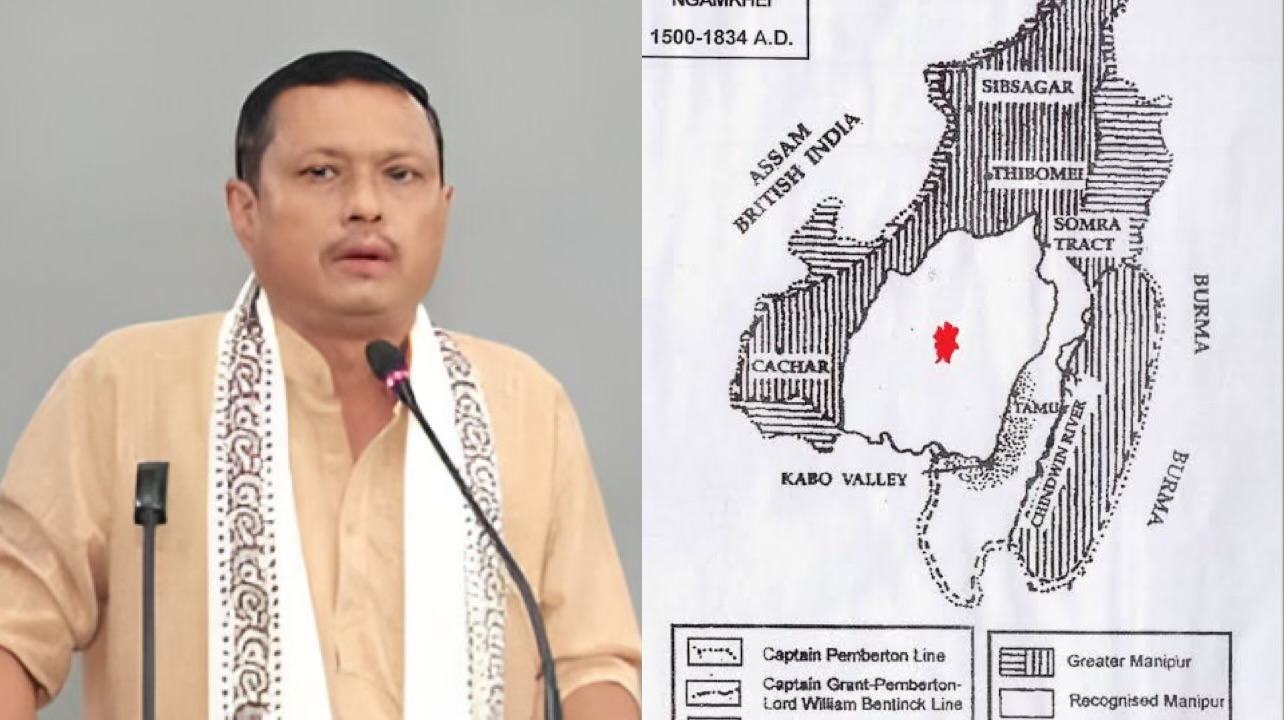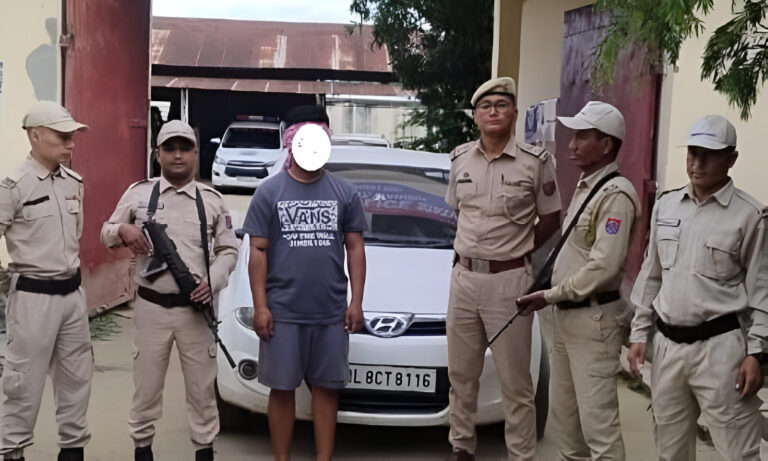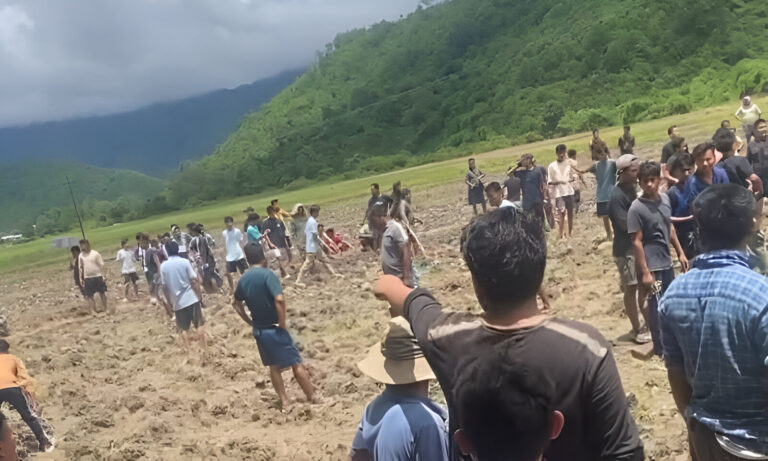Manipur Rajya Sabha MP Sanajaoba Seeks Reclamation of Kabaw Valley
Summary
Manipur Rajya Sabha MP Sanajaoba has raised a bold call for the reclamation of Kabaw Valley, highlighting its historical, cultural, and strategic significance. In his recent statement, he emphasized that reclaiming this valley is not only about restoring territorial integrity but also about reviving a heritage that resonates deeply with the people of Manipur. This move has sparked vigorous debates among local communities, political stakeholders, and international observers alike.
Long Article
Introduction: A Bold Call for Reclamation
Imagine a place where history whispers through the winds, where every stone and stream tells a story of cultural pride and ancient sovereignty. This is the spirit behind Manipur Rajya Sabha MP Sanajaoba’s recent appeal for the reclamation of Kabaw Valley. In an era where borders and identities are increasingly scrutinized, Sanajaoba’s call is as much about reclaiming lost heritage as it is about asserting political will.
Why does Kabaw Valley hold such allure? For many, it’s not merely a piece of land; it’s a repository of memories, traditions, and the enduring spirit of a people. This article delves deep into the significance of Kabaw Valley, the rationale behind its reclamation, and the far-reaching implications of such a move for Manipur and beyond.
Understanding the Kabaw Valley: Geography and Legacy
Kabaw Valley, with its rolling landscapes and meandering rivers, is more than just a geographical entity—it’s a symbol of heritage. This valley, steeped in history, has witnessed the rise and fall of empires, the ebb and flow of cultural exchanges, and the vibrant evolution of local traditions. It’s like an ancient tapestry woven with the threads of time, each strand representing a unique chapter in the region’s story.
For generations, the people of Manipur have regarded Kabaw Valley as part of their ancestral legacy. It’s a region where folklore and history intertwine, where local legends recount tales of valor, unity, and resilience. Reclaiming Kabaw Valley is, therefore, seen not only as a political gesture but also as an act of cultural revival—a step towards restoring a piece of identity that many feel has been unfairly lost.
The Vision of MP Sanajaoba: A Quest for Heritage
When Sanajaoba speaks about reclaiming Kabaw Valley, he speaks with the fervor of someone who deeply cherishes his roots. He envisions a future where this historic region is once again integrated into the cultural and administrative fold of Manipur. His statements are imbued with a sense of duty and a desire to correct what he perceives as historical oversights.
Sanajaoba’s approach is refreshingly candid. He isn’t simply using political rhetoric; he is calling for a reexamination of historical records, a dialogue among scholars, and an inclusive discussion with local communities. His proposal is like a bridge—a connection between the past and the future, aiming to bring long-lost heritage back to life while paving the way for sustainable development and unity.
Historical and Cultural Importance of Kabaw Valley
To understand why Kabaw Valley is so significant, one must look back at the annals of history. For centuries, the valley has been a crossroads of civilizations. It served as a natural corridor for trade, culture, and ideas, fostering an environment where diverse communities could interact, coexist, and contribute to a rich cultural mosaic.
Kabaw Valley’s fertile lands and strategic location made it a prized possession for ancient rulers. Historical texts and local folklore often highlight the valley’s role as a vital resource hub and a cultural melting pot. It is said that festivals, rituals, and traditional crafts that originated in Kabaw Valley continue to influence the cultural practices of Manipur today.
This region is not just a physical space; it’s an emotional and symbolic landscape. Reclaiming it would mean reviving a heritage that has, over the years, been relegated to the pages of history. Imagine being able to walk through a valley where every tree, every river bend, holds the echoes of past generations—this is the dream that many in Manipur share.
Political Implications: Rewriting Boundaries and Narratives
Sanajaoba’s call for the reclamation of Kabaw Valley is bound to stir political debates. Territorial reclamations are never just about land—they are about identity, pride, and the right to self-determination. By advocating for the return of Kabaw Valley, Sanajaoba is challenging existing narratives and urging policymakers to reconsider historical maps and records.
This move has several layers. On one hand, it’s a matter of rectifying historical claims; on the other, it’s a strategic decision that could have implications for regional politics. Reclaiming Kabaw Valley might influence local governance, boost regional pride, and even alter how neighboring regions perceive Manipur’s cultural identity.
However, such a bold move also comes with challenges. Political stakeholders must weigh historical evidence, diplomatic relations, and the potential for unrest. The reclamation of a territory, especially one with as deep a history as Kabaw Valley, is like opening a treasure chest filled with both hope and controversy.
Diplomatic Dimensions: Navigating Regional and International Waters
One cannot discuss territorial reclamations without considering the broader diplomatic context. Kabaw Valley is not isolated from international interests. Its reclamation might have ripple effects that extend beyond the borders of Manipur. There is a delicate balance to maintain when engaging in discussions that could affect relations with neighboring countries and regional powers.
For instance, if Kabaw Valley lies near international borders or has historical ties with other nations, Sanajaoba’s call could necessitate diplomatic dialogues. It’s a classic case of local aspirations meeting global realities. The challenge here is to assert one’s heritage without igniting disputes—a task that requires both sensitivity and strategic planning.
Imagine trying to restore a family heirloom that has been misplaced for generations; you would need to negotiate with distant relatives and reconcile differing memories. Similarly, reclaiming Kabaw Valley is not just about stating a claim; it’s about engaging in meaningful conversations with all stakeholders, ensuring that the process is peaceful and inclusive.
Local Perspectives: Voices from the Heart of Manipur
The call for reclamation has resonated deeply with many in Manipur. For locals, Kabaw Valley is more than just a piece of land—it’s an integral part of their collective memory. Elders recall stories passed down through generations, and cultural practitioners see in the valley a canvas upon which their traditions can flourish once again.
Community reactions have been mixed but largely passionate. Some view Sanajaoba’s call as a courageous step towards reclaiming a lost identity, while others urge caution, fearing that the process might reopen old wounds. The beauty of this debate lies in its ability to unite diverse voices under a common cause: the preservation and celebration of Manipur’s heritage.
For many, the reclamation of Kabaw Valley is seen as a chance to restore a sense of pride and belonging. It’s like reviving a forgotten language or restoring an ancient monument—an act that reaffirms the value of one’s roots. The local community’s involvement is crucial, as it ensures that the reclamation process is rooted in genuine cultural revival rather than mere political maneuvering.
Challenges in Reclamation: Navigating Complex Terrain
While the idea of reclaiming Kabaw Valley is inspiring, it is not without its hurdles. Territorial reclamation is a complex and often contentious process, fraught with legal, administrative, and diplomatic challenges. Let’s break down some of these challenges:
Historical Documentation and Evidence
One of the primary challenges is the need for solid historical evidence to support the reclamation claim. Historians and researchers will need to sift through centuries of records, folklore, and oral traditions to build a convincing case. It’s like piecing together a giant jigsaw puzzle where every piece must fit perfectly to reveal the complete picture.
Legal and Administrative Barriers
Even with compelling historical evidence, the legal process of reclaiming a territory can be intricate. There are existing laws, treaties, and administrative protocols that govern territorial boundaries. Any attempt to alter these must be approached with caution and meticulous legal scrutiny. Navigating this maze of regulations requires not only political will but also expert legal counsel.
Diplomatic Sensitivities
As mentioned earlier, reclaiming a territory can affect international relations. Diplomatic sensitivities must be handled with care to avoid unintended conflicts. Negotiating with other states or international bodies might be necessary, and any misstep could have far-reaching consequences. It’s akin to handling a delicate family reunion where every conversation must be navigated with tact and respect.
Economic and Social Considerations
Beyond legalities and diplomacy, there are economic and social dimensions to consider. How will the reclamation impact local economies, infrastructure, and social services? Will it spur development or create new challenges? These are practical questions that need to be addressed alongside the symbolic act of reclamation. The process must be holistic, ensuring that it brings tangible benefits to the people of Manipur.
Opportunities Ahead: A Vision for a Revitalized Future
Despite the challenges, the reclamation of Kabaw Valley presents a unique opportunity for Manipur. It’s a chance to reimagine the region’s future while honoring its past. Let’s explore some of the potential opportunities that could arise from this bold move:
Cultural Renaissance
Reclaiming Kabaw Valley could spark a cultural renaissance. With renewed focus on a historically significant region, there could be a surge in initiatives to revive traditional arts, crafts, and festivals. Imagine art exhibitions, cultural festivals, and academic symposiums dedicated to exploring and celebrating the valley’s legacy. This cultural revival could help foster a stronger sense of identity and pride among the people of Manipur.
Tourism and Economic Growth
A revitalized Kabaw Valley can also become a major draw for tourists. Historical sites, natural beauty, and cultural events can transform the valley into a vibrant tourist destination. This not only boosts local economies but also creates new job opportunities in hospitality, transport, and artisanal trades. Think of it as unlocking a hidden treasure that benefits everyone—locals, businesses, and visitors alike.
Enhanced Regional Connectivity
The reclamation could also lead to improvements in regional infrastructure. Investments in transportation, communication, and public amenities might follow as the region’s significance is recognized on a broader scale. Enhanced connectivity can improve the quality of life for residents and open up new avenues for economic development, making Kabaw Valley a model for sustainable regional growth.
Strengthening Regional Identity
At its core, reclaiming Kabaw Valley is about reaffirming a shared identity. It reinforces the notion that heritage matters and that historical narratives can shape the future. This move can galvanize communities, inspire local leaders, and create a sense of unity that transcends administrative boundaries. It’s about saying, “This is our home, our history, and our future.”
Comparative Insights: Lessons from Other Reclamation Movements
Throughout history, several regions have undergone reclamation processes that offer valuable lessons for Manipur. Consider the revival of heritage sites across the globe—places where local communities rallied to restore ancient ruins, revive lost languages, or reclaim cultural landmarks. These stories serve as analogies that illustrate both the struggles and the triumphs inherent in reclamation efforts.
For instance, look at the way certain European regions have restored historical districts that were once neglected, turning them into thriving cultural hubs. These examples teach us that reclamation is not just a political act; it’s a deeply personal and transformative journey that requires persistence, passion, and collaboration. Sanajaoba’s vision for Kabaw Valley can draw inspiration from these global examples, blending local heritage with modern strategies for sustainable development.
The Role of Public Participation: A Collective Journey
No reclamation effort can succeed without the active participation of the people it aims to serve. Community involvement is the bedrock of any cultural revival, and the reclamation of Kabaw Valley is no exception. Public consultations, local workshops, and cultural events can create a vibrant platform for dialogue and collaboration.
Imagine neighborhoods coming together to share their memories, document oral histories, and contribute to a collective narrative about Kabaw Valley. Such initiatives not only enrich the reclamation process but also ensure that the outcome truly reflects the aspirations of the community. Public participation transforms a top-down policy decision into a shared journey of rediscovery and empowerment.
Media’s Role in Shaping the Narrative
In today’s digital age, media plays a crucial role in framing and disseminating narratives. The reclamation of Kabaw Valley has already caught the attention of various news outlets, social media influencers, and cultural commentators. Positive media coverage can help rally public support and create a momentum that drives the reclamation process forward.
Media platforms can host interviews with historians, conduct live debates, and even create documentaries that explore the valley’s rich legacy. This dynamic interplay between traditional and new media not only informs the public but also holds stakeholders accountable. A well-informed public is a powerful ally in any reclamation effort, ensuring transparency and fostering a spirit of collective responsibility.
Future Prospects: A New Chapter for Kabaw Valley
Looking ahead, the reclamation of Kabaw Valley can be seen as the start of a new chapter in Manipur’s history. It’s a chapter that promises renewal, inclusivity, and progress. But what does the future hold?
Envision a Kabaw Valley where historical monuments are restored, local arts flourish, and the economy blossoms thanks to increased tourism and infrastructure development. Picture a region where every resident feels a profound connection to their heritage and is empowered to contribute to its future. This is not a far-fetched dream—it’s a vision that, with dedicated effort and collaboration, can become a reality.
The future of Kabaw Valley hinges on several factors: effective governance, continuous community engagement, and strategic planning. As policymakers work to navigate the legal and diplomatic intricacies, it is essential that they keep the interests of the people at the forefront. A successful reclamation will not only restore a piece of Manipur’s past but will also pave the way for a more dynamic and inclusive future.
Addressing Critics and Fostering Constructive Debate
Any transformative initiative is bound to attract criticism. There are voices that question the feasibility, legal basis, and broader implications of reclaiming Kabaw Valley. Critics argue that such moves could inflame regional tensions or divert attention from pressing developmental issues. However, constructive debate is vital in any democratic process.
Sanajaoba’s proposal invites scrutiny, and that is a healthy part of public discourse. By engaging with dissenting opinions and incorporating diverse viewpoints, the reclamation effort can evolve into a more robust and inclusive initiative. After all, challenging the status quo requires not just courage but also a willingness to listen, adapt, and find common ground.
Conclusion: A Step Toward Restoring a Lost Heritage
In wrapping up our exploration of the reclamation of Kabaw Valley, one thing stands out: this is more than just a territorial claim—it’s a heartfelt plea to revive a part of Manipur’s soul. MP Sanajaoba’s call resonates deeply with anyone who values history, culture, and the power of collective memory.
Reclaiming Kabaw Valley is a journey of rediscovery—a process of stitching together the frayed edges of history to create a tapestry that reflects both the struggles and triumphs of a proud people. It is a reminder that our past is not something to be forgotten or hidden away; it is a living, breathing part of who we are, and it deserves to be celebrated and preserved.
As the debate unfolds, one can only hope that through dialogue, research, and unwavering community support, the reclamation of Kabaw Valley will not remain just a dream but will become a catalyst for cultural renaissance and sustainable progress in Manipur.
FAQs
- What is the main focus of MP Sanajaoba’s call regarding Kabaw Valley?
MP Sanajaoba is advocating for the reclamation of Kabaw Valley to restore a vital part of Manipur’s historical and cultural heritage, emphasizing its importance for local identity and future development. - Why is Kabaw Valley considered significant for Manipur?
Kabaw Valley is steeped in history and cultural legacy, having served as a crossroads for trade, tradition, and cultural exchange. Reclaiming it is seen as a way to reconnect with and celebrate Manipur’s rich heritage. - What challenges might arise from the reclamation process?
Challenges include gathering robust historical evidence, navigating legal and administrative hurdles, addressing diplomatic sensitivities, and ensuring that economic and social impacts are carefully managed. - How can the reclamation of Kabaw Valley benefit the region?
Reclamation could spark a cultural renaissance, boost tourism and local economies, enhance regional connectivity, and strengthen a shared identity among the people of Manipur. - How is public participation expected to influence the reclamation process?
Active involvement from local communities through consultations, cultural programs, and collaborative initiatives will help ensure that the reclamation process reflects the true aspirations of the people and leads to sustainable, inclusive development.



